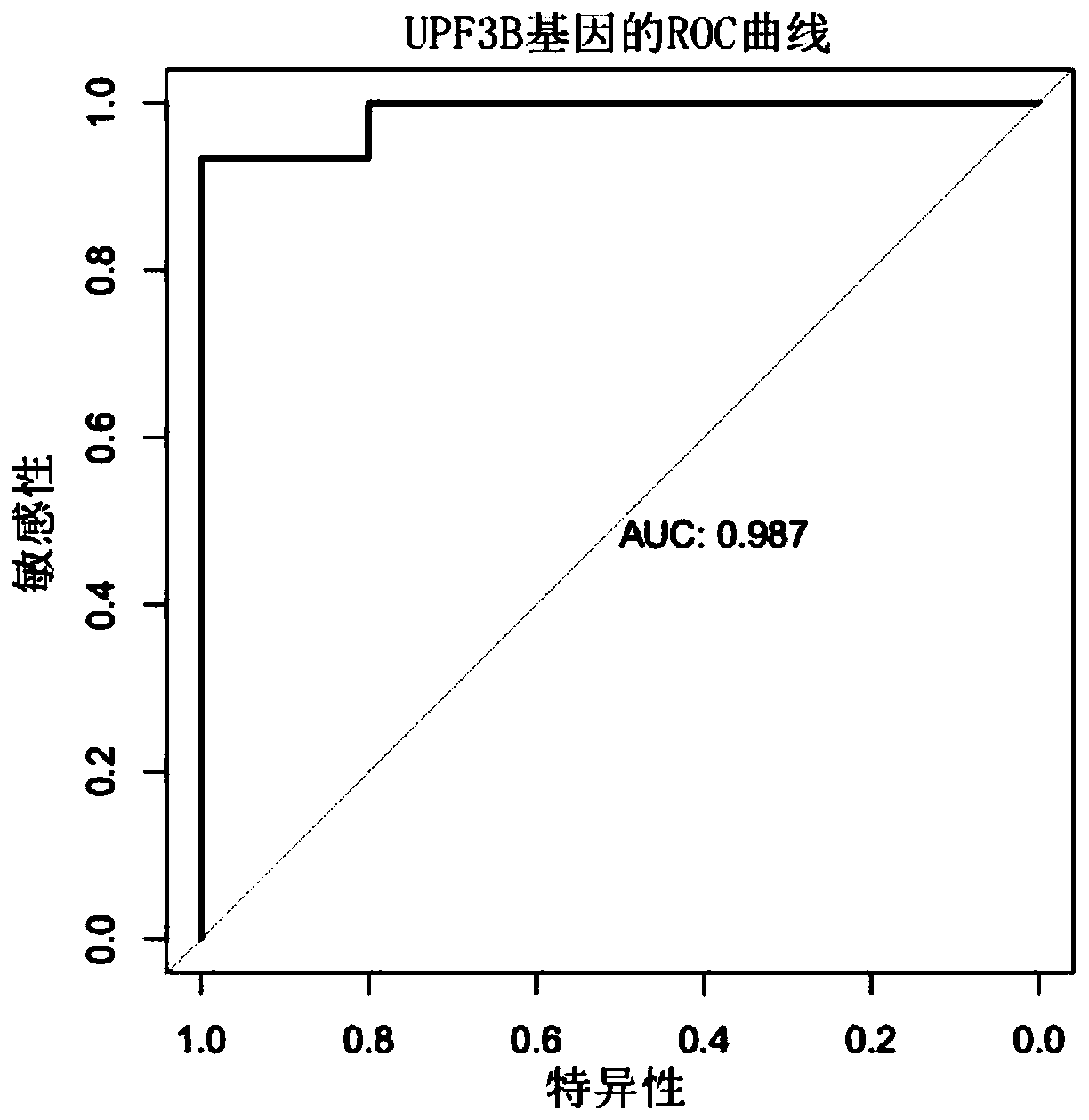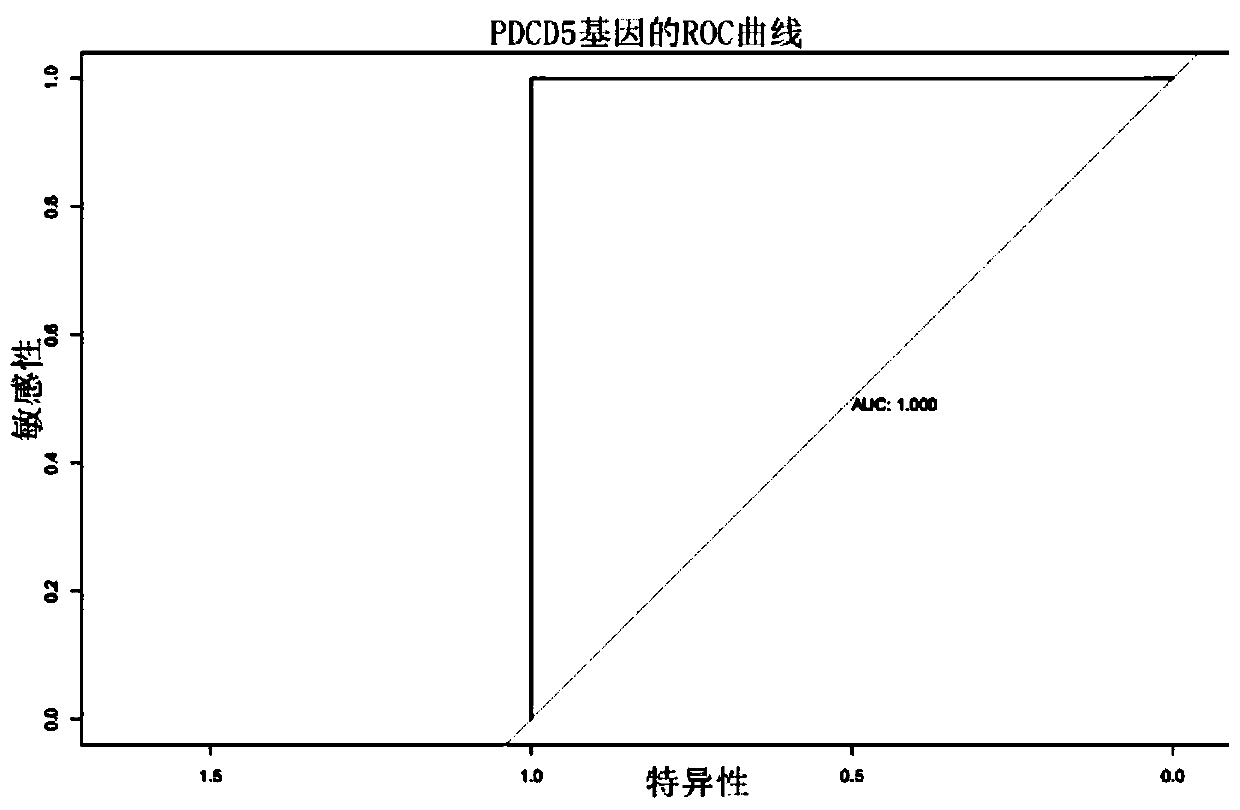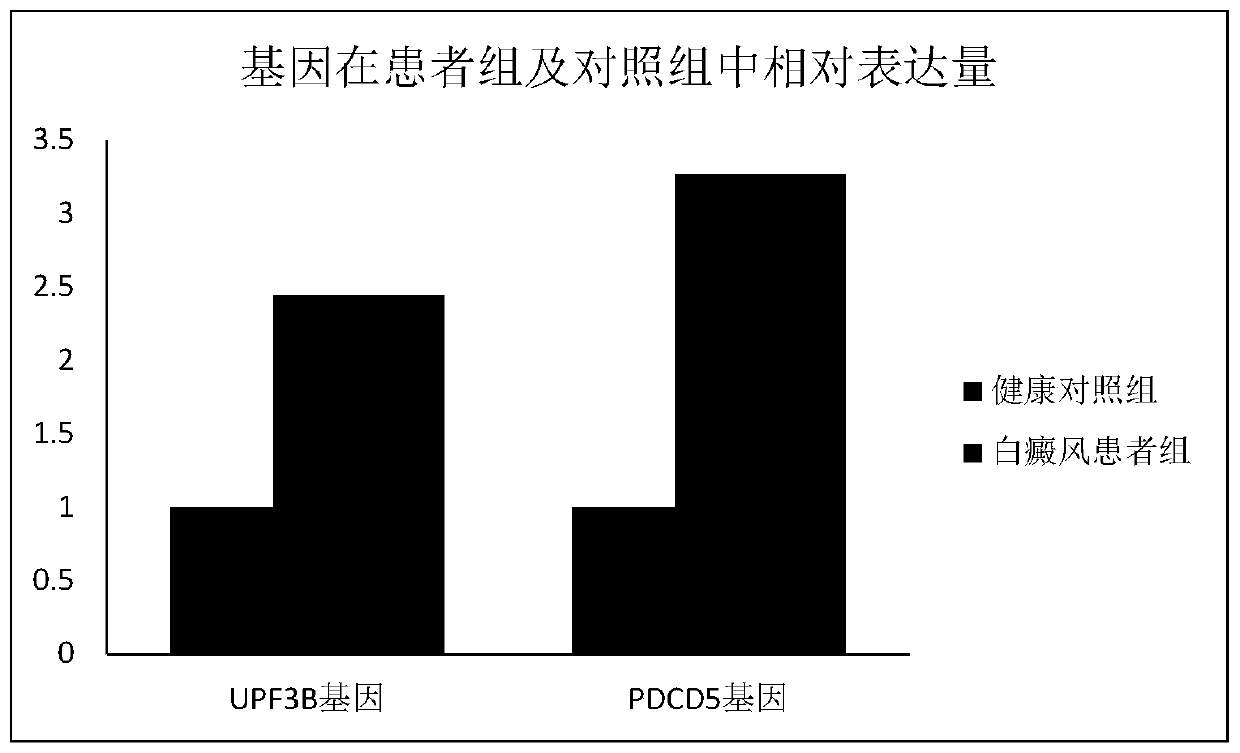Vitiligo gene detection marker and application thereof
A vitiligo and gene technology, applied in the medical field, can solve the problems of perioral dermatitis, carcinogenicity and danger of phototoxic reaction, and achieve the effect of strong specificity, simplified quantitative detection process, and rapid response.
- Summary
- Abstract
- Description
- Claims
- Application Information
AI Technical Summary
Problems solved by technology
Method used
Image
Examples
Embodiment 1
[0032] Example 1 High-throughput sequencing of vitiligo samples
[0033] Sample selection:
[0034] Vitiligo case group: All patients have been strictly diagnosed by dermatologists, with typical clinical manifestations, in line with the diagnostic criteria of vitiligo, and other diseases that can cause hypopigmentation, such as tinea versicolor, senile leukoplakia, anemic nevus, pityriasis simplex, mottled disease, albinism, etc.
[0035] Normal control group: control samples were from healthy people in physical examination centers in the same region or other subjects who visited dermatology clinics. The control requirements for the included study were non-vitiligo patients, and none of their first-, second-, and third-degree relatives had vitiligo patients; no other autoimmune diseases and systemic diseases; no blood relationship between them.
[0036] Collection of samples:
[0037] After consultation and agreement with the first-diagnosed doctor, the outpatients were rou...
Embodiment 2
[0040] Example 2 Electronic verification of UPF3B gene and PDCD5 gene
[0041] The method for evaluating the efficacy of a single molecule or a diagnostic model is to establish a receiver operating characteristic (ROC) curve, and judge the ability of diagnosis by calculating the area under the curve (Area Under Curve). The value of the area under the ROC curve is between 1.0 and 0.5. In the case of AUC>0.5, the closer the AUC is to 1, the better the diagnostic effect. When the AUC is 0.5-0.7, the accuracy is lower, and when the AUC is 0.7-0.9 There is a certain accuracy when the AUC is above 0.9 and the accuracy is relatively high. The chip data GSE75819 of vitiligo in the GEO database was selected for verification. The results showed that the AUC values of the UPF3B gene and the PDCD5 gene were close to 1. For specific data, see figure 1 and figure 2 . The results of electronic verification show that the two genes protected by this application have a very good correlati...
Embodiment 3
[0042] Example 3 Detection of the expression levels of UPF3B gene and PDCD5 gene in patients with vitiligo
[0043] Sample collection and extraction:
[0044] For sample collection, 22 cases of peripheral blood from patients diagnosed with vitiligo were selected (the screening criteria were the same as in Example 1), and the control group was 29 cases of peripheral blood from healthy people who underwent physical examination. The RNA in the serum was extracted using the QIAGEN blood RNA extraction kit. For specific steps, refer to the instructions. .
[0045] reverse transcription:
[0046] 1) Mix 10pg-1μg total RNA template with 2μl 10× buffer, 2μl dATP (10mM), 0.5μl polyA polymerase, 0.5μl RNase inhibitor and RNase free water , the final volume was 20 μl, and incubated at 37°C for 1h.
[0047] 2) Add 1 μl of 0.5 μg / μl Oligo(dT) specific RT primer to the reaction tube, and incubate at 70° C. for 5 minutes.
[0048] 3) Immediately incubate on ice for at least 2 minutes to ...
PUM
 Login to View More
Login to View More Abstract
Description
Claims
Application Information
 Login to View More
Login to View More - R&D
- Intellectual Property
- Life Sciences
- Materials
- Tech Scout
- Unparalleled Data Quality
- Higher Quality Content
- 60% Fewer Hallucinations
Browse by: Latest US Patents, China's latest patents, Technical Efficacy Thesaurus, Application Domain, Technology Topic, Popular Technical Reports.
© 2025 PatSnap. All rights reserved.Legal|Privacy policy|Modern Slavery Act Transparency Statement|Sitemap|About US| Contact US: help@patsnap.com



